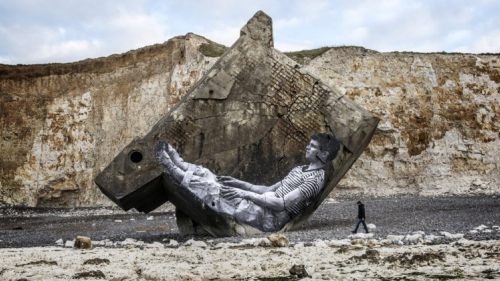Broad Cinema: From Princess To General - The Evolution Of Robin Wright
From Alice Guy-Blaché to Ava Duvernay, women have been integral to cinema for the last 120 years. Broad Cinema is a new column that will feature women who worked on films that are playing this month at the Alamo Drafthouse. From movie stars to directors, from cinematographers to key grips, Broad Cinema will shine a spotlight on women in every level of motion picture production throughout history.
This week we are celebrating Robin Wright in The Princess Bride. Get your tickets here!
---
“Your princess is really quite a winning creature. A trifle simple perhaps, but her appeal is undeniable.”
This comment from Christopher Guest’s villainous Count Rugen in The Princess Bride is mean, but it’s a pretty accurate summation of Robin Wright’s romantic heroine, Buttercup. As big screen debuts go, Wright’s may be notable, but it’s not exactly distinctive. Buttercup is a perpetual damsel in distress, the course of her entire life dictated (without much resistance from her) by the men around her, from the cowardly Prince Humperdinck to her dashing true love, Westley.
Which is why, viewed at a macro level, Wright’s career is interesting to look at in the evolution of women’s roles in film and TV, particularly in recent years. The older Wright has gotten, the stronger her roles have become. The part that made her famous is so vastly different from her later performances in shows like House of Cards and movies like Wonder Woman or Blade Runner 2049 that it highlights how much she, and the way Hollywood writes women, has changed over the last 30 years.
Though The Princess Bride could be considered a revisionist fairy tale in a few respects, it’s thoroughly traditional in its gender roles. While Cary Elwes’ Westley and Wallace Shawn’s Vizzini banter in the famous “battle of wits” scene, Buttercup sits to the side, blindfolded and silent. In the fire swamp scene, her job is to listen to Westley’s story, nod, and get lifted out of the way of flame spurts. In fact, Buttercup’s primary purpose in the film is to be an object. In most of her scenes, she’s being picked up, prodded or tossed around like a sack of potatoes.
Almost every character in The Princess Bride has a defining trait. Westley is cunning and seemingly superhuman. Inigo (Mandy Patinkin) is a great swordsman. Fezzik (André the Giant) is immensely strong. Even the albino minion in the Pit of Despair has a gimmick. Buttercup, however, gets nothing. It’s pretty telling that in a movie full of memorable quotes, Wright only gets one or two at best, while her male co-stars have scads of great lines.
Wright’s starring role in Ari Folman’s 2013 film The Congress could be seen as a meta-commentary on her Princess Bride character. In the film, Wright plays a fictionalized version of herself, and her role in Princess Bride is directly referenced as her springboard to fame. In order to make money to save her son’s failing eyesight, Wright signs a contract with a studio allowing them to make a digital copy of her body. The studio can use this copy however they choose. This allows for some fascinating explorations, but also brings up the theme of commodification--of performers, and of bodies. In this film, Wright (or at least her likeness) really is treated like an object, because that’s the whole point.
2013 turned out to be an important year for Wright, seeing not only the release of The Congress, but also the premiere of Netflix’s House of Cards. In Claire Underwood, one of the great female anti-heroes of Peak TV, she’s added another iconic, but very different, character to her roster. Where Buttercup is passive and silent, Claire is all agency and power and ruthlessness. She’s grown from being a supporting player to the focal point of the show, with House of Cards’ forthcoming final season bringing her into the main role.
House of Cards was part of a turning point in television, both for Netflix, as one of its first original shows, and for scripted drama, with Claire emerging as part of a wave of complex anti-heroines. The rise of House of Cards, as well as shows like Homeland, Scandal and How to Get Away with Murder, popularized female characters who could behave as reprehensibly as Tony Soprano or Walter White and still hold an audience’s sympathies.
Wright’s career renaissance feels like it comes full circle with her turn as the Amazon general Antiope in last year’s Wonder Woman. As a warrior, leader and mentor to Gal Gadot’s Diana, Antiope is made even more effective by the very presence of Wright in the role. Here we see a woman who began her career as a demure, fresh-faced princess, and 30 years later is fierce, wiry and athletic. Buttercup was hauled from place to place. Antiope does backflips off of shields.
Crucially, physical power is not the only thing that makes Wright’s work in the film so memorable. She’s also passing on what she’s learned to Diana, making the student stronger than the teacher ever was. Again, the casting is perfect here, because as an actress Wright appears to be someone who has grown tremendously from her experiences. Antiope’s transfer of knowledge to Diana feels just as much like Wright empowering Gadot with her own wisdom. These days, Robin Wright’s appeal is indeed undeniable. But her long and varied history proves she’s never been simple. Not even a little bit.



